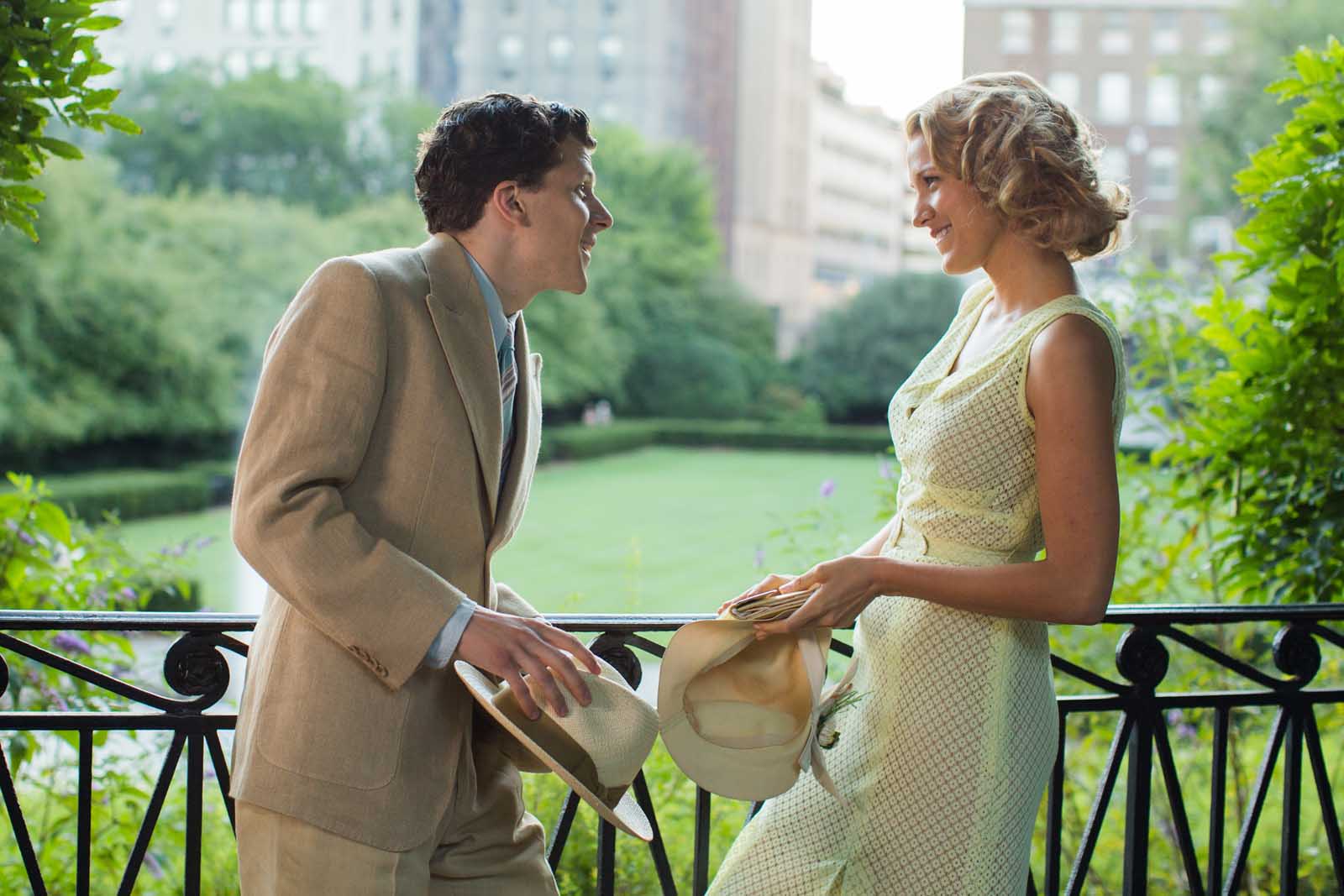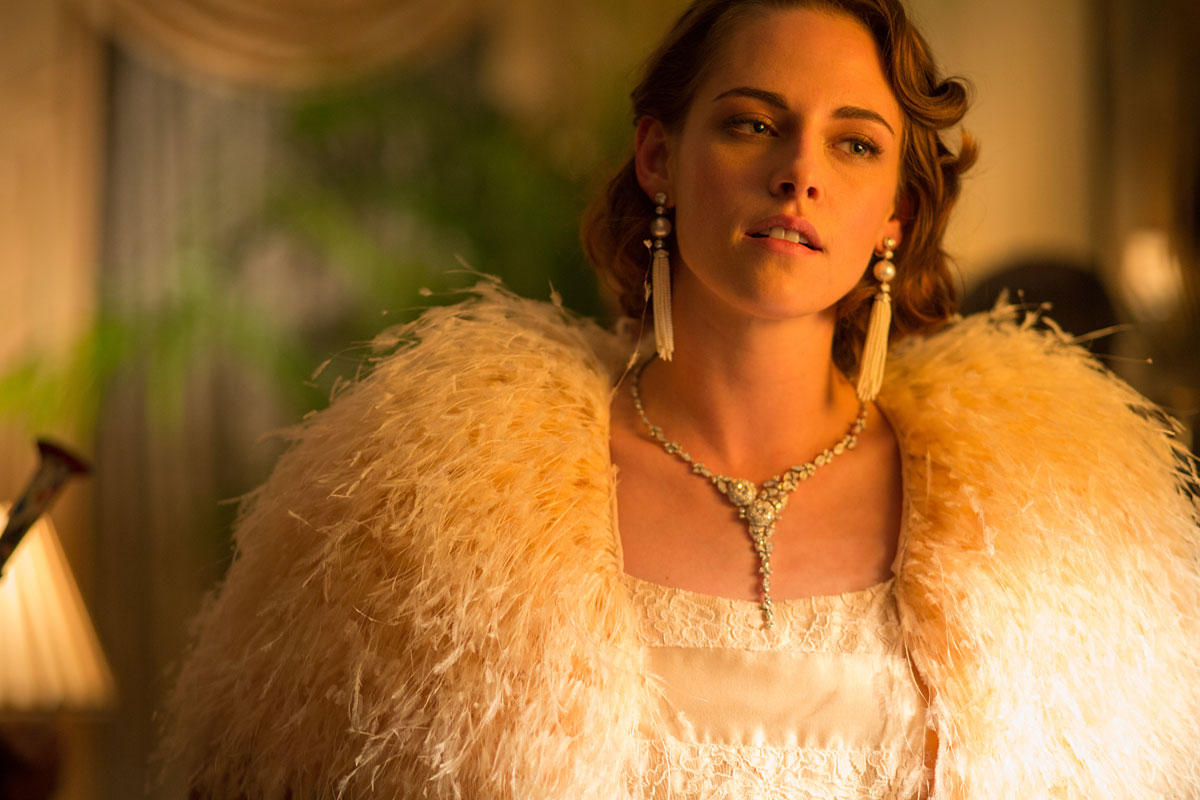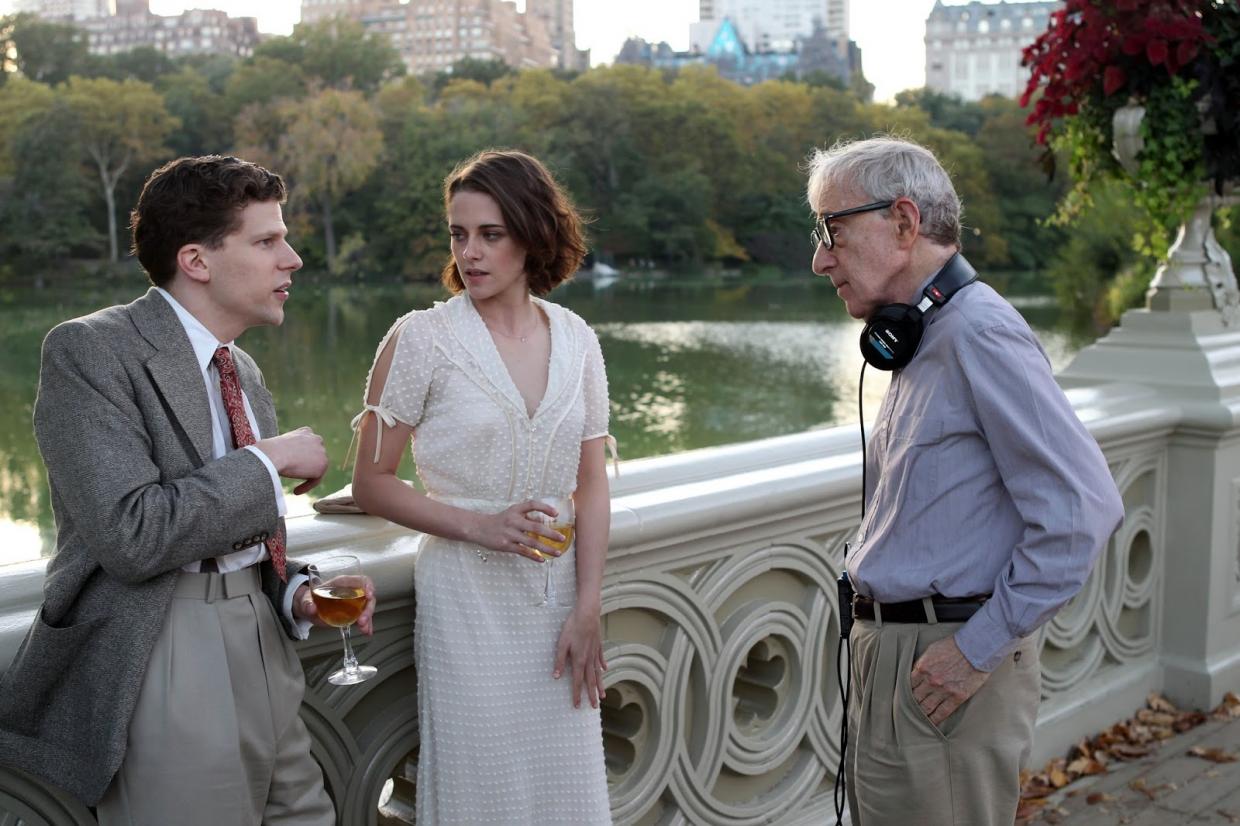What makes “Café Society” visually distinct from Woody Allen’s other films?
Quick Answer: Many critics have categorized Woody Allen’s Café Society as a “late period Allen” film that touches on themes and plot elements reminiscent of his previous work. But in its cinematography and design, Café Society is the result of some crucial firsts. It is Allen’s first film to be shot digitally, his first feature-length collaboration with legendary cinematographer Vittorio Storaro, and one of the first of his filmography in which the visuals are as crucial to the story as dialogue or plot.
Café Society (2016) is in many ways a classic Woody Allen film — it involves a neurotic Jewish man, a love triangle and conversational philosophy set in romantic cityscapes — but visually, Allen’s 47th feature marks a departure. It’s his first film to be shot digitally and his first feature-length collaboration with renowned Italian cinematographer Vittorio Storaro (Apocalypse Now; Last Tango in Paris). While much of the film takes place on Allen’s well-trodden thematic ground, it’s one of his first films in which the visuals are equally as important to the story as dialogue or plot. Café Society is successful as a period piece stylized to a symbolic end, thanks to Storaro’s camerawork as well as aesthetic magic from Allen’s longtime production and costume designers Santo Loquasto and Suzy Bezinger.
 Jesse Eisenberg and Kristen Stewart as Bobby and Vonnie in Café Society (2016)
Jesse Eisenberg and Kristen Stewart as Bobby and Vonnie in Café Society (2016)
Café Society follows the journey of Bobby Dorfman (Jesse Eisenberg), a frantic stand-in for Allen, who leaves his Jewish family behind in the Bronx to try and make it in Hollywood. When he arrives, he calls up his uncle Phil (Steve Carell), a bigwig agent who makes him wait before hiring him (“We don’t want to emphasize the nepotism”). Phil’s soft-spoken assistant Vonnie (Kristen Stewart) shows Bobby around town, and together they gaze at Hollywood mansions from behind closed gates and share a meal in candlelight, leaving Bobby hopeful for a romantic future that they probably won’t share. We soon learn that Phil and Vonnie are having an affair, and Bobby leaves town with his heart broken — returning to New York to pursue a different career and another woman (Blake Lively). This is when the film’s title comes into play. Bobby’s new career is running a nightclub with his cliché gangster brother (Corey Stoll) that caters to Manhattan’s swanky socialites for whom the Great Depression seemed an urban legend: the Café Society.
 Jesse Eisenberg and Blake Lively as Veronica in “Café Society”
Jesse Eisenberg and Blake Lively as Veronica in “Café Society”
The film’s tone is dictated by Bobby’s shifting outlook: the mood begins romantic and hopeful for a starry future, turns glamorous but melancholy, ends bittersweet. Throughout Café Society, Bobby yearns for people and things that are just out of reach — priming him for a nostalgic perspective — and Storaro’s use of color and light reflects his romanticism. It looks like every landscape was shot at magic hour (the time shortly after sunrise or before sunset): “honey-dipped,” as production designer Loquasto calls it. The Academy Award-winning cinematographer has said that for Café Society, he wanted to establish four different looks and color palettes while maintaining a coherent style: “Like a symphony with four movements,” he told The Film Stage. “The Bronx is more a lunar light, cloudier and desaturated, a colder tonality. Los Angeles is much brighter and warmer,” he said to Variety. “When the lead character returns to New York, he brings back some of the tonality of L.A. It’s a brighter New York, on a higher societal level compared with the Bronx, a world in which they wear tuxedos to dinner.” And finally, “The last part of the story, in L.A. and in N.Y. where the natural and artificial lights are influencing each other.”
Storaro, who views cinematography as a high art, looked to various Depression-era artists for inspiration when crafting the distinct visual styles for each act. For scenes of the Dorfman family in the Bronx, he looked to the work of painter Georgia O’Keefe and her husband, photographer Alfred Stieglitz. For the California scenes, Storaro was influenced by the paintings of Edward Hopper and Otto Dix and the photographs of Edward Steichen, who was famous for his portraits of celebrities and for taking the first fashion photographs ever published.
In Café Society as well as in Storaro’s other films, he drew inspiration from his favorite painter, Caravaggio, whose work featured dramatic use of light, dark and shadows. “The language of light is one of the most important things we have in the visual arts,” Storaro has said. “By using the proper light, you get to see an image that is appropriate for that moment, for that sequence.”
 by Edward Hopper</i></p><p><i>Café Society</i> was both Allen’s and Storaro’s first venture shooting a feature presentation digitally, but neither was fazed by the change. <a
href=) At a press conference at the 2016 Cannes Film Festival, where Café Society premiered, Allen said: “To me, [filming digitally] was exactly the same. There’s a camera, it tends to be lit, and the process is the same.”
At a press conference at the 2016 Cannes Film Festival, where Café Society premiered, Allen said: “To me, [filming digitally] was exactly the same. There’s a camera, it tends to be lit, and the process is the same.”
Storaro, whose artful work has long been influential in the film industry, offered a forward-looking take: “Part of the language of digital is the language of progress,” he said. “The industry has changed completely, and we have to face it with knowledge.” Storaro shot the majority of the film on a Sony CineAlta F65 (4K with 16 bit-color, and a 2:1 aspect ratio), and for the flashbacks, he used a Sony F55 for a more fluid effect. The cinematographer’s only qualm with shooting digitally was the camera’s high sensitivity to light: some images would come out intricately detailed when clarity might not have been the intention.
 Kristen Stewart wearing Chanel in Café Society (Costume Design: Suzy Bezinger)
Kristen Stewart wearing Chanel in Café Society (Costume Design: Suzy Bezinger)
Along with Storaro’s camerawork, Café Society’s success as a stylized period piece comes from the intricate sets and costume design by Loquasto and Bezinger. Loquasto, who has worked with Allen on countless films both period and contemporary, is responsible for the glamorous L.A. exteriors and striking art deco interiors that are central to the film. He has said that Allen doesn’t include much scenery description in his screenplays, so Loquasto typically shows him photographs and builds models, making joint decisions in conversation.
In an interview with The Wall Street Journal, Loquasto revealed the filming locations for some of the most elaborately designed scenes: the poolside party was shot at a modernist mansion in Santa Monica once owned by Dolores Del Rio, the scenes at uncle Phil’s home were shot inside a 1928 Spanish Colonial Revival-style villa in Los Feliz, and Bobby’s high society nightclub “Les Tropiques” was built on a Brooklyn soundstage.
For costume design, seven-time Allen collaborator Bezinger worked with Chanel to create custom 1930s-style looks for Kristen Stewart, searching through the archives to find two period dresses for the iconic designer to recreate. For Blake Lively’s character, she selected retro-style diamonds that were fitting of her socialite status, also by Chanel. “I couldn’t really design this film and not address Chanel. In the 20th century, Chanel was the epitome of style, luxury and glamour,” Bezinger said. “If I was to portray Café Society properly I would have to use Chanel. It is a vital part of history.”
 Jesse Eisenberg, Kristen Stewart and Director Woody Allen on set of “Café Society”
Jesse Eisenberg, Kristen Stewart and Director Woody Allen on set of “Café Society”
Café Society has been unfavorably categorized as a “late period” Allen film by many critics: plot and theme-wise, it seems a blend of several of his previous films, in which the female characters exist only in relation to the men who pursue them and existential philosophizing is as common as conversations about the weather. But Café Society is a new incarnation of Allen in its visuals. The film is purposefully stylized, rewinding to a time when style and design were of utmost social importance: when wealthy Manhattanites would flaunt their status within the comfort of art-deco nightclubs, leaving the rest of the city’s economic hardships outside.
Storaro’s cinematography not only complements the film’s ritzy design but also invites viewers to watch events unravel from Bobby’s “honey-dipped” perspective, which by the time the credits role is more bittersweet.

